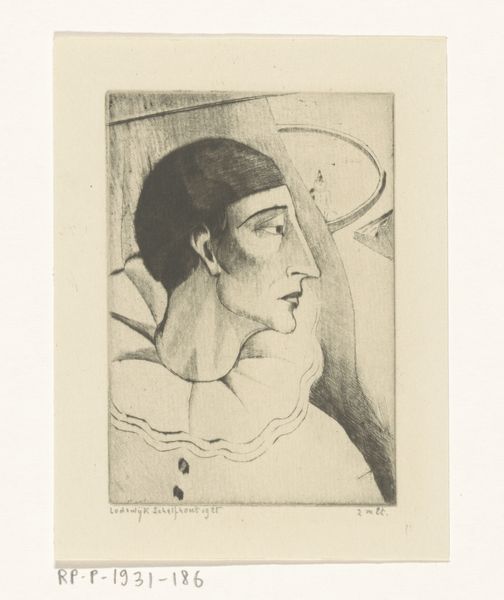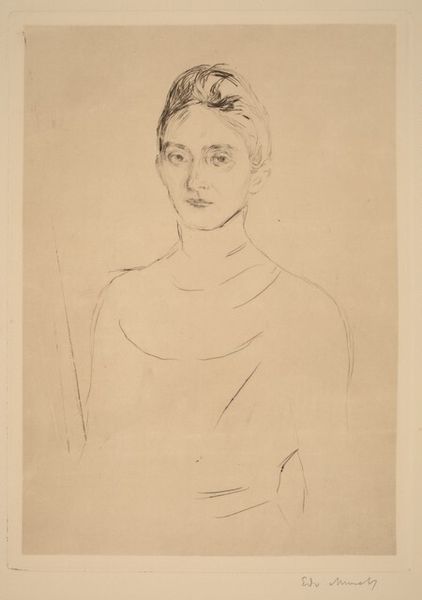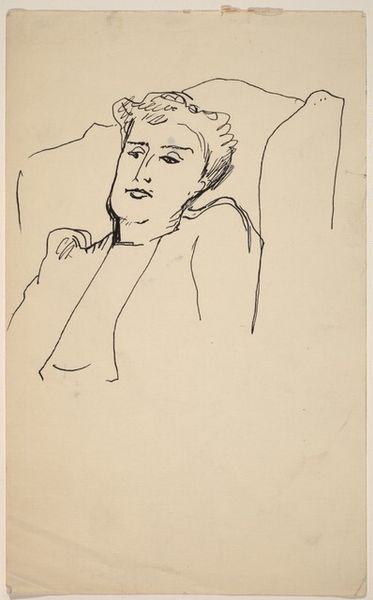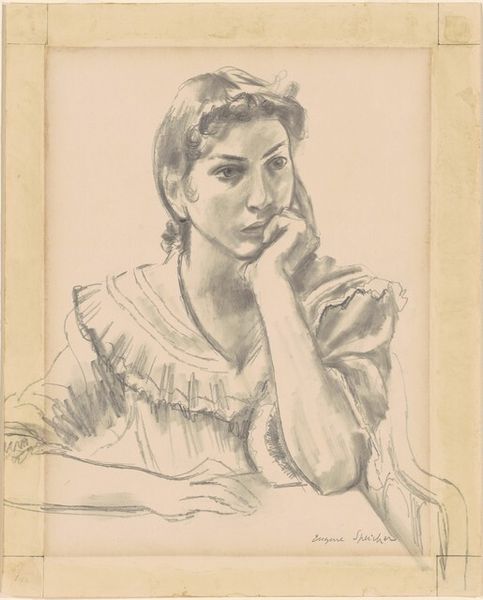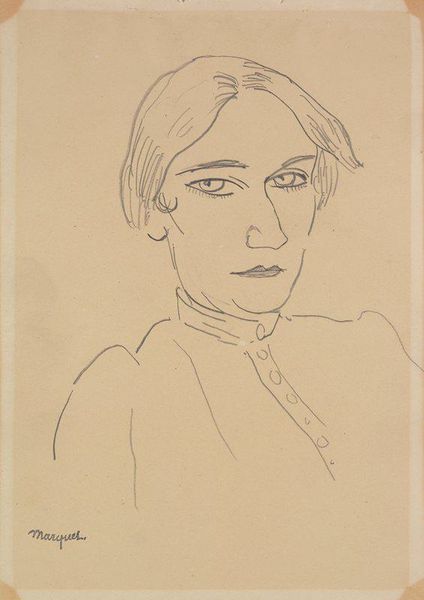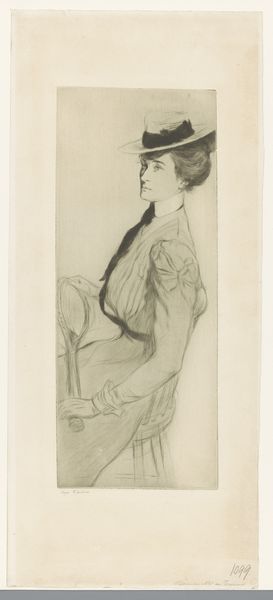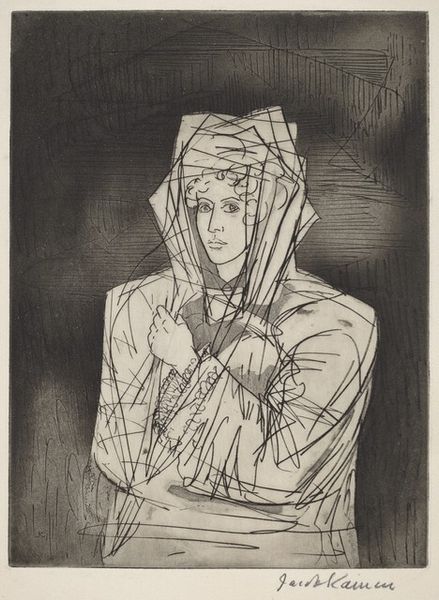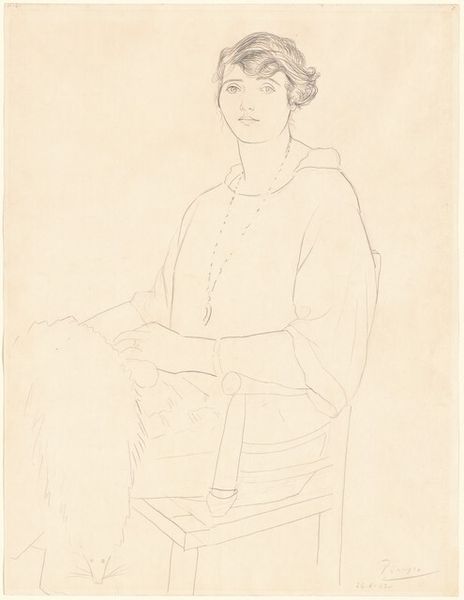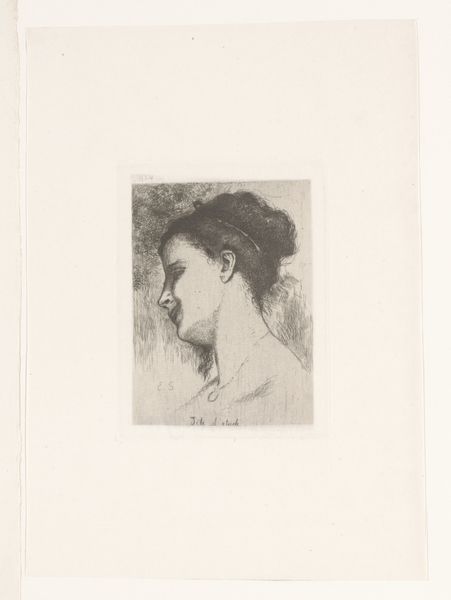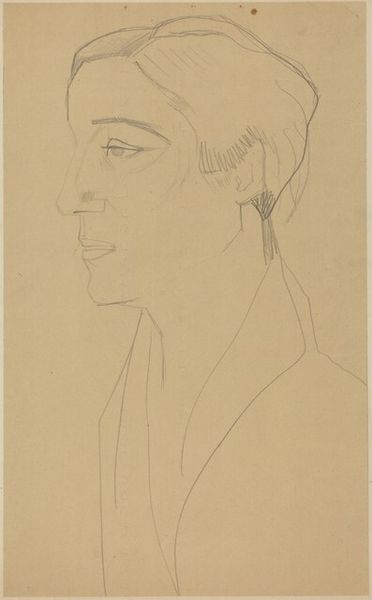
drawing, print, paper, ink, pencil
#
portrait
#
pencil drawn
#
drawing
# print
#
charcoal drawing
#
paper
#
ink
#
pencil drawing
#
pencil
#
portrait drawing
#
realism
Dimensions: plate: 22.7 x 18.7 cm (8 15/16 x 7 3/8 in.) sheet: 32.8 x 27.5 cm (12 15/16 x 10 13/16 in.)
Copyright: National Gallery of Art: CC0 1.0
Editor: This is Robert Austin's "Noël Edwards," created in 1935. It seems to be a print, perhaps based on a drawing. It's quite striking, particularly the almost photographic realism in the hands and face, juxtaposed with the flatness of the background. What formal elements stand out to you in this piece? Curator: The emphasis on line is immediately apparent. Consider how Austin employs hatching and cross-hatching to create volume and shadow. Notice also how the planar background interacts with the implied three-dimensionality of the figure, establishing a spatial tension. Is it not a compelling study in contrasts? Editor: It is. I see that now, how the different line techniques affect the perceived depth. The hands seem to reach out, while the patterned shawl almost flattens against the figure. Does the relatively restricted tonal range—the near absence of pure white or deep black—impact the overall reading? Curator: Precisely. This limited range emphasizes the subtle gradations within the gray scale. Examine how Austin uses these minute variations to define the textures of fabric and skin. Furthermore, consider how the cropping of the figure, cutting off at the torso, contributes to a sense of immediacy, focusing the viewer’s attention on the facial expression and the gesture of the hands. Editor: So, rather than narrative content, the success of this piece lies in its formal arrangement and execution of line and tone. It's a sophisticated balancing act between realism and abstraction. Curator: Indeed. It's a demonstration of how formal choices shape our perception and elicit meaning through careful consideration of structure, technique, and spatial relationships. Editor: That really reframes how I see the portrait. I was initially drawn in by the subject’s expression, but now I better appreciate the mechanics and interplay of line, texture and the use of positive and negative space.
Comments
No comments
Be the first to comment and join the conversation on the ultimate creative platform.
